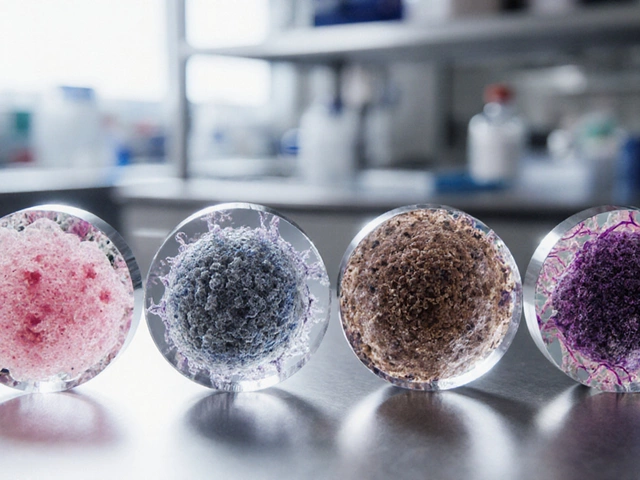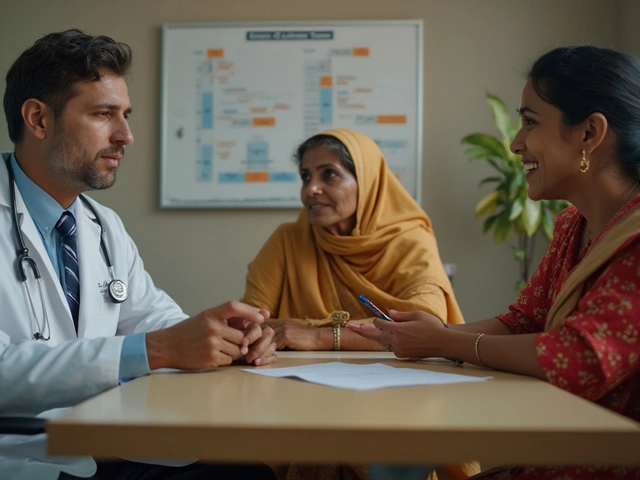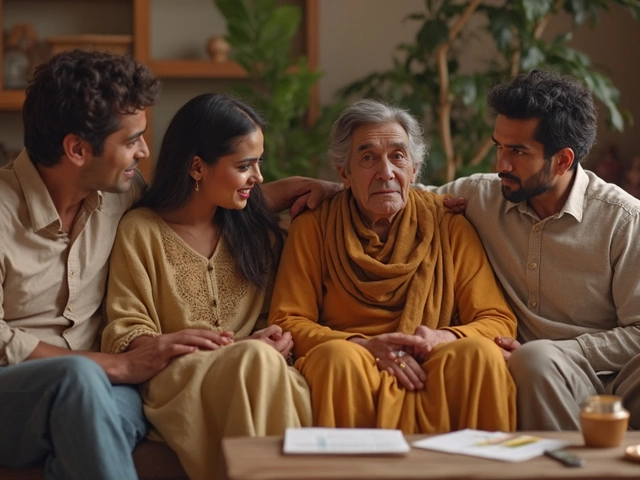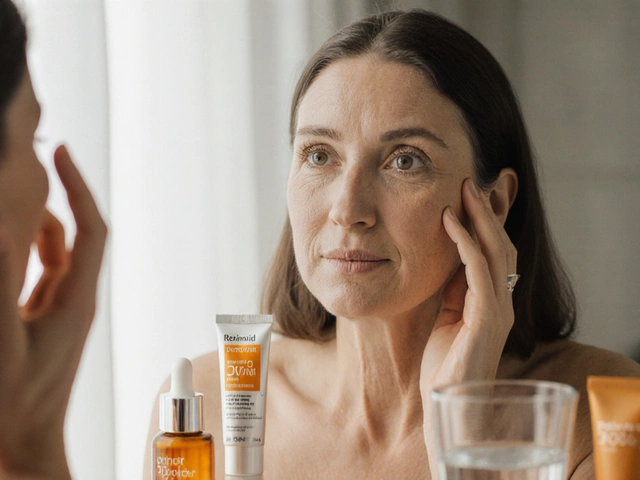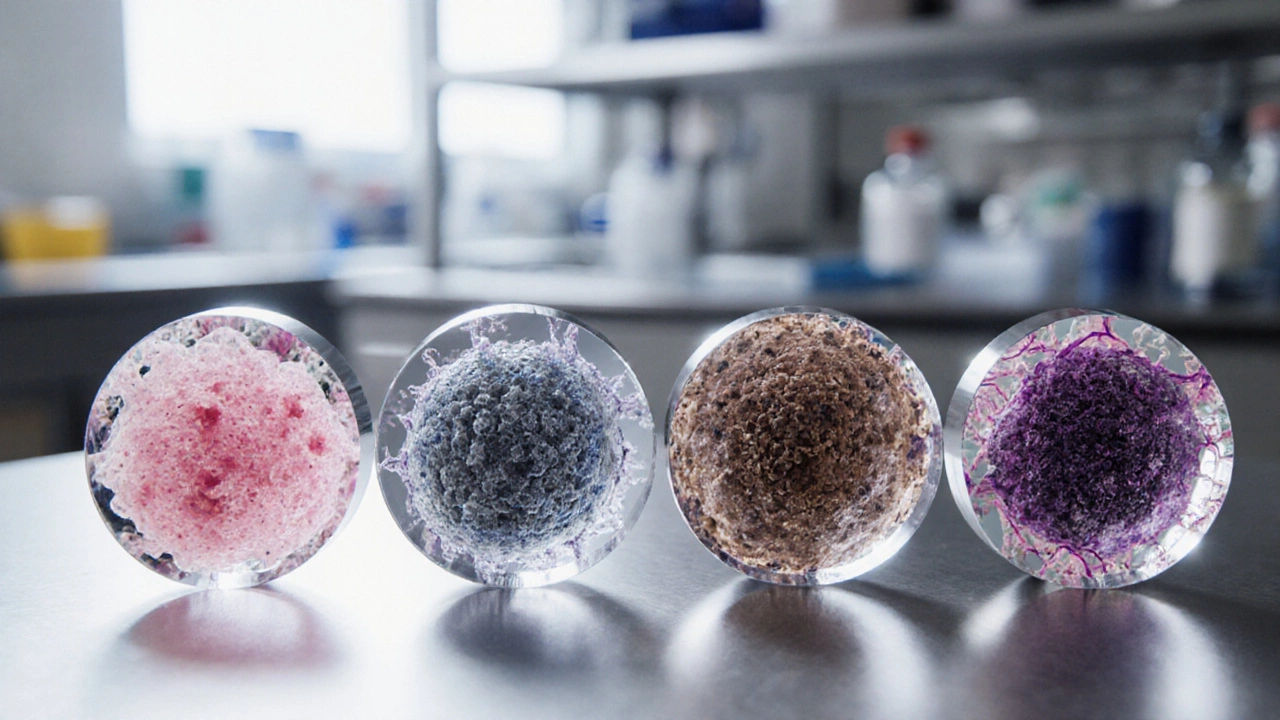
Can Cancer Be Fully Cured? Truths About Beating Cancer
Cancer Survival Calculator
Estimate your approximate 5-year survival chance based on cancer type, stage, treatment options, and lifestyle factors. This tool is for informational purposes only and does not replace professional medical advice.
Cancer Information
Lifestyle Factors
Enter your information to see estimated survival rates
Quick Takeaways
- Most cancers are treatable, but a true cancer cure is rare.
- "Beating" cancer usually means long‑term remission, not guaranteed eradication.
- Traditional options-surgery, chemotherapy, radiation-still save the majority of lives.
- Immunotherapy, targeted drugs, CAR‑T and gene‑editing are reshaping what success looks like.
- Stage, tumor type, genetics and lifestyle all decide whether you can stay cancer‑free.
When people ask, "Can you fully beat cancer?" they’re looking for a straight‑up answer. The truth sits somewhere between optimism and hard data. Let’s break down the language, the science, and the realistic odds so you can separate hype from hope.
When talking about serious illnesses, Cancer is a group of diseases marked by uncontrolled cell growth that can invade nearby tissues and spread through the bloodstream or lymph system. It isn’t a single disease; it includes more than 100 different types, each with its own behavior, treatment options, and survival statistics. Understanding that variety is the first step to answering whether any cancer can be fully eradicated.
What Does “Beat” Really Mean?
Patients and doctors often use three overlapping terms: cure, remission, and control. A cure implies that the disease will never return. Remission means no detectable cancer after treatment, but there’s still a chance of recurrence. Control-sometimes called chronic management-means the cancer is kept in check with ongoing therapy, much like diabetes.
Statistically, most cancers are not "cured" in the absolute sense. For example, according to the National Cancer Institute’s 2024 data, the 5‑year survival rate for all cancers combined in the U.S. is about 68%, meaning roughly one‑third of patients will see the disease return within five years.
Traditional Pillars of Cancer Treatment
Before the wave of precision medicine, doctors relied on three main tools. Each one targets cancer in a different way.
Surgery is the physical removal of a tumor and surrounding tissue. It works best when the cancer is localized and hasn’t spread. Successful removal can lead to a cure for early‑stage solid tumors, such as certain breast, colon, or prostate cancers.
Chemotherapy is a systemic treatment that uses drugs to kill rapidly dividing cells. It attacks cancer cells that have migrated beyond the primary site, but it also harms healthy fast‑growing cells, causing side effects like hair loss and nausea.
Radiation therapy is the use of high‑energy beams to damage the DNA of cancer cells, stopping them from dividing. It can be curative for many early‑stage cancers and is often combined with surgery or chemo to boost effectiveness.
| Treatment | Mechanism | Typical Use | Common Side Effects | Approx. Success Rate (5‑yr) |
|---|---|---|---|---|
| Surgery | Physical removal of tumor | Localized solid tumors | Infection, pain, scarring | Varies by cancer type (30‑90%) |
| Chemotherapy | Drug‑induced cell death | Metastatic disease, adjuvant | Nausea, fatigue, hair loss | 30‑70% depending on stage |
| Radiation | DNA damage via energy beams | Local control, palliation | Skin burns, fatigue | 40‑80% for curative intent |
| Immunotherapy | Boosts immune system to attack cancer | Melanoma, lung, kidney | Autoimmune reactions | 15‑40% durable responses |
| Targeted therapy | Blocks specific molecular pathways | Breast HER2+, CML, EGFR‑mutant NSCLC | Skin rash, liver issues | 20‑60% depending on mutation |
Emerging Weapons: Immunotherapy, Targeted Therapy, and Beyond
Immunotherapy is a class of treatments that harness the patient’s own immune system to recognize and destroy cancer cells. Checkpoint inhibitors (e.g., pembrolizumab) have produced long‑lasting remissions in melanoma and lung cancer, with some patients staying disease‑free for over ten years.
Targeted therapy is drugs designed to interfere with specific molecules that drive cancer growth. These agents work best when a tumor carries a known genetic alteration-think HER2‑positive breast cancer treated with trastuzumab or BCR‑ABL‑positive chronic myeloid leukemia managed with imatinib.
CAR T‑cell therapy is a personalized immunotherapy where a patient’s T cells are engineered to target a cancer‑specific antigen. It’s approved for certain blood cancers and is showing promise in early solid‑tumor trials.
Gene therapy is techniques that edit or replace faulty DNA sequences within cancer cells. CRISPR‑based approaches are still experimental but could one day eradicate the root cause of some malignancies.
These cutting‑edge options don’t replace surgery or chemo; they often work alongside them, improving response rates and extending survival. For many patients, the combination of traditional and novel therapies is what turns a scary diagnosis into a manageable chronic condition.
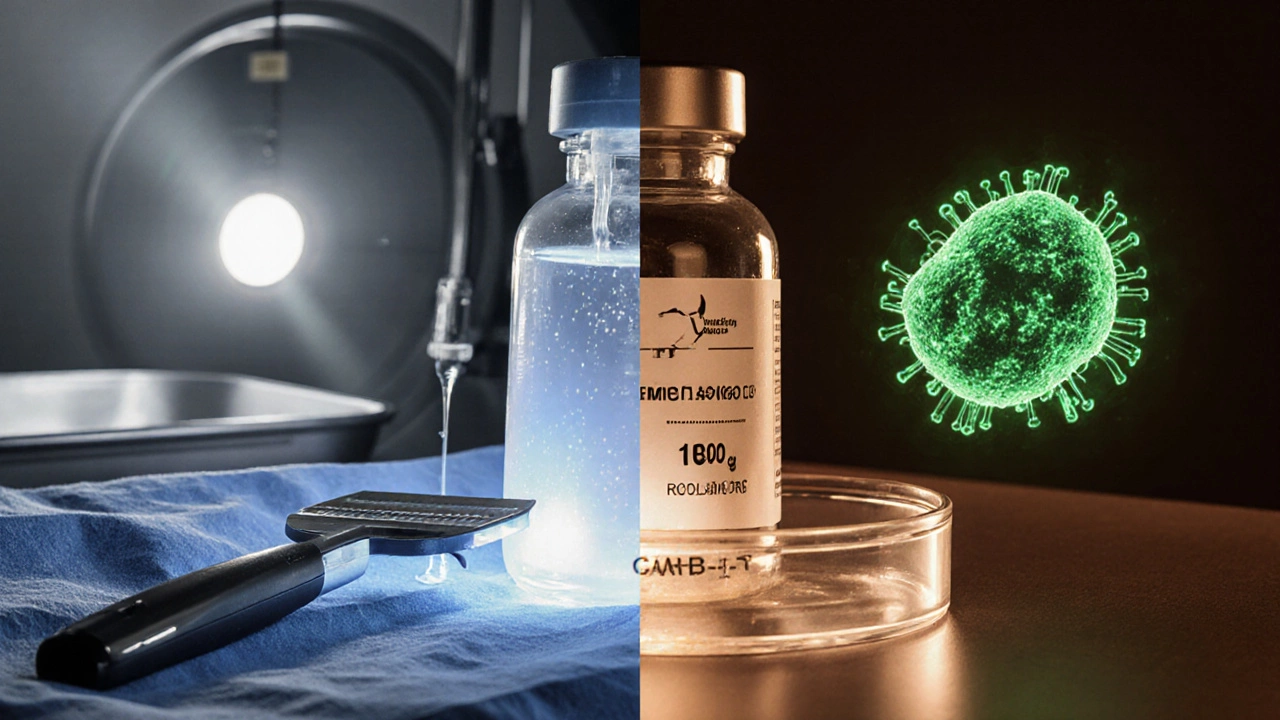
What Determines Your Odds?
Three big factors drive whether you can truly beat cancer:
- Stage at diagnosis. Early‑stage cancers (I‑II) usually have higher cure rates because they’re confined.
- Biology of the tumor. Some cancers, like pancreatic adenocarcinoma, are intrinsically aggressive, while others, such as certain thyroid cancers, are indolent.
- Patient‑specific variables. Age, overall health, genetic predispositions, and even socioeconomic status affect treatment tolerance and access to trials.
A 2023 study from the American Cancer Society showed that patients who enrolled in clinical trials had a 12% higher 5‑year survival than those who received standard care, underscoring the importance of cutting‑edge options.
Survival Numbers You Can Trust (2024)
Here’s a snapshot of the most recent U.S. 5‑year survival rates by cancer type, pulled from SEER data:
- Breast (female, localized): 99%
- Prostate (localized): 99%
- Melanoma (early): 98%
- Pancreatic (all stages): 12%
- Glioblastoma (all stages): 7%
These figures illustrate that “full cure” is realistic for some cancers but still elusive for others. The takeaway? Your odds are highly specific to the tumor you face.
Beyond Medicine: Lifestyle Choices That Boost Success
Even the best medical arsenal can be hampered by poor habits. Research consistently shows that certain actions improve treatment response and lower recurrence risk:
- Quit smoking. Continuing to smoke after a lung‑cancer diagnosis cuts median survival by 30%.
- Maintain a healthy weight. Obesity is linked to higher recurrence in breast and colon cancers.
- Stay active. Moderate exercise (150min/week) improves fatigue and may enhance immune function.
- Follow nutrition guidelines. Diets rich in fruits, vegetables, and omega‑3 fatty acids support overall health during chemo or immunotherapy.
- Adhere to follow‑up care. Regular scans and lab tests catch recurrences early when they’re most treatable.
These aren’t “cure‑by‑diet” hacks; they’re evidence‑based measures that give your body the best shot at staying cancer‑free.

Common Myths About Beating Cancer
Let’s bust a few myths that often cloud judgment:
- Myth: If you feel fine after treatment, you’re cured.
Fact: Microscopic disease can linger for years; regular imaging is essential. - Myth: All cancers are the same.
Fact: Genetic mutations, micro‑environment, and organ location create unique challenges. - Myth: Alternative therapies can replace chemo or radiation.
Fact: Herbs, supplements, and “detox” plans lack rigorous evidence and may interfere with proven treatments. - Myth: A single breakthrough will wipe out cancer forever.
Fact: Cancer evolves; ongoing research aims to stay one step ahead.
Bottom Line Checklist
When you or a loved one gets a cancer diagnosis, keep this list handy:
- Confirm the exact type and stage through pathology and imaging.
- Ask about combined modality treatment (surgery+chemo+radiation) if appropriate.
- Inquire about eligibility for immunotherapy, targeted drugs, or clinical trials.
- Implement lifestyle changes: quit smoking, exercise, balanced diet.
- Schedule regular follow‑up appointments and stick to them.
- Seek psychosocial support-counseling, support groups, or survivorship programs.
Following these steps maximizes your chance of long‑term remission, which is as close to “beating” cancer as most patients realistically achieve today.
Frequently Asked Questions
Is cancer ever truly cured?
A true cure-meaning the disease never returns-occurs for some early‑stage cancers (e.g., localized breast, prostate, thyroid). For most malignancies, doctors talk about remission or disease‑free survival rather than an absolute cure.
Can lifestyle changes replace medical treatment?
No. Diet, exercise, and quitting smoking improve outcomes and quality of life, but they can’t eradicate existing tumor cells. They should be added to, not subtracted from, standard therapy.
What’s the difference between immunotherapy and chemotherapy?
Chemotherapy uses chemicals that kill rapidly dividing cells, affecting both cancer and healthy tissue. Immunotherapy trains the immune system to specifically target cancer cells, often with fewer off‑target effects and the potential for lasting memory.
Are clinical trials worth considering?
Yes. Trials give access to cutting‑edge therapies not yet widely available and have been linked to modest survival benefits. Discuss eligibility with your oncologist.
How long should I stay on follow‑up care after treatment?
Most guidelines recommend intensive monitoring (imaging and labs) every 3‑6months for the first 2years, then annually up to at least 5years. The exact schedule depends on cancer type and treatment.

Arnav Singh
I am a health expert with a focus on medicine-related topics in India. My work involves researching and writing articles that aim to inform and educate readers about health and wellness practices. I enjoy exploring the intersections of traditional and modern medicine and how they impact healthcare in the Indian context. Writing for various health magazines and platforms allows me to share my insights with a wider audience.
About
Medical Resource Center India is a comprehensive online platform dedicated to providing reliable health information and medical resources in India. Explore a wide range of articles, tips, and advice on medicine, healthcare services, and wellness. Stay informed about the latest developments in Indian medicine and access valuable insights into maintaining a healthy lifestyle. Discover expert guidance and health solutions tailored for every Indian citizen. Your go-to destination for authoritative medical knowledge in India.
